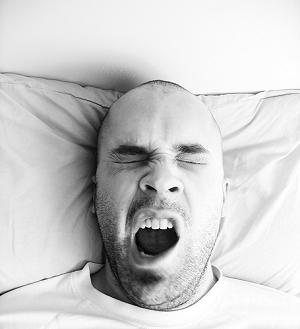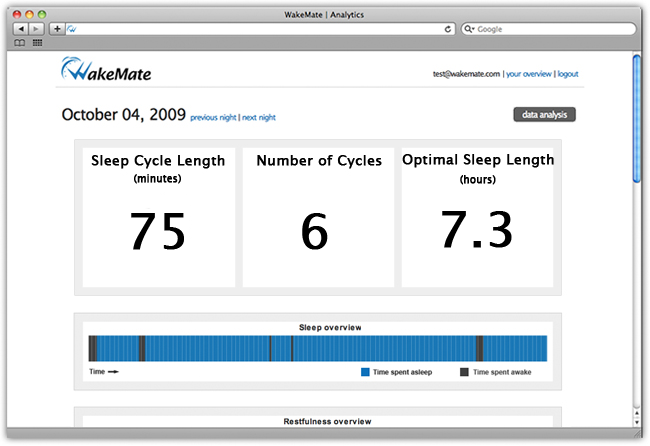 Ah, the curse of the groggy morning. You may have followed all the rules: no caffeine before bed, an early bedtime, and all the rest. But your best efforts are oftentimes for naught, foiled by the mysterious ways of sleep cycles. There may be an answer: WakeMate, a Y Combinator-funded startup that’s launching today, is looking to help you catch that ever-elusive good night’s sleep (and maybe even the perfect nap, too).
Ah, the curse of the groggy morning. You may have followed all the rules: no caffeine before bed, an early bedtime, and all the rest. But your best efforts are oftentimes for naught, foiled by the mysterious ways of sleep cycles. There may be an answer: WakeMate, a Y Combinator-funded startup that’s launching today, is looking to help you catch that ever-elusive good night’s sleep (and maybe even the perfect nap, too).
WakeMate is one of the few startups we’ve see that actually involves its own physical product (another that comes to mind is FitBit). To use the service, you first order the WakeMate wristband from the website, which costs $50. Then, you download an application for your Bluetooth-enabled smartphone (WakeMate is launching with support for iPhone, BlackBerry, Android, Windows Mobile, and a standard Java app for non-smart phones; support for Palm’s WebOS is on the way).
Once you’ve installed the app and paired your wristband with your phone, you set your alarm (more on that later) and hit they hay. The wristband tracks the movement of your wrist through the night, which it can use to analyze your sleep patterns. If you’re raising your eyebrows you’re not alone – this sounded strange to me at first, but co-founder Greg Nemeth explains it’s a well established sleep-study technique called actigraphy.
The WakeMate wristband collects data throughout the night and stores it on internal Flash storage. When it’s time to wake you up WakeMate doesn’t necessarily sound an alarm at exactly the time you set. Instead, it monitors your sleep patterns for the 20 minute window prior to that and sounds your alarm when you’re in the lightest sleep mode, which can help eliminate that groggy feeling you sometimes wake up with. The alarm doesn’t come from the wristband though – instead, the wristband uses Bluetooth to trigger your cell phone’s alarm. It then transmits your sleep data to your phone, which in turn uses its cellular data connection to upload it to the WakeMate servers. You can then browse through your sleep history from the WakeMate website.

WakeMate will be facing off with a number of other sleep devices, including the Zeo Personal Sleep Coach, which was released over the summer. The Zeo consists of a standalone alarm clock that pairs with a headband that measures your brainwaves as opposed to your wrist movements. It’s also quite a bit more expensive than WakeMate, running around $250. Nemeth says he says the Zeo as a powerful tool for people who need to diagnose their sleep problems. But he says that WakeMate has a much broader appeal, in part because of its lower price, but also because it’s more portable.
For example, WakeMate can be used to help you take the ideal nap, even when you’re on the go. The device has modes for both ‘power naps’ (which last around 30 minutes) and ‘full naps’, which range from 60-90 minutes.
WakeMate shows promise, but I don’t love the fact that it requires a Bluetooth handset to trigger its alarm. It seems like it would be easier just to integrate an alarm directly into the wristband, along with a cheap LED display so you can set the time (you could still use Bluetooth to transfer your sleep data via a handset). Co-founder Arun Gupta says they’ve considered this, but that integrating an alarm would make it bulkier, less comfortable, and more expensive. He also points out that some people might sleep with their arm under their pillow, which could muffle the alarm (perhaps they could include a ‘vibrate’ mode).
All of that said, the sleep industry has a broad appeal – who hasn’t wished they could kiss those groggy mornings goodbye? And the $50 pricepoint is low enough to make the product attractive even for people who don’t have serious sleep issues. You’ll have to wait a while to try one though: the site is now accepting preorders (you get $5 off) but the wristbands won’t start shipping until January.
Image by
HilaryAQ